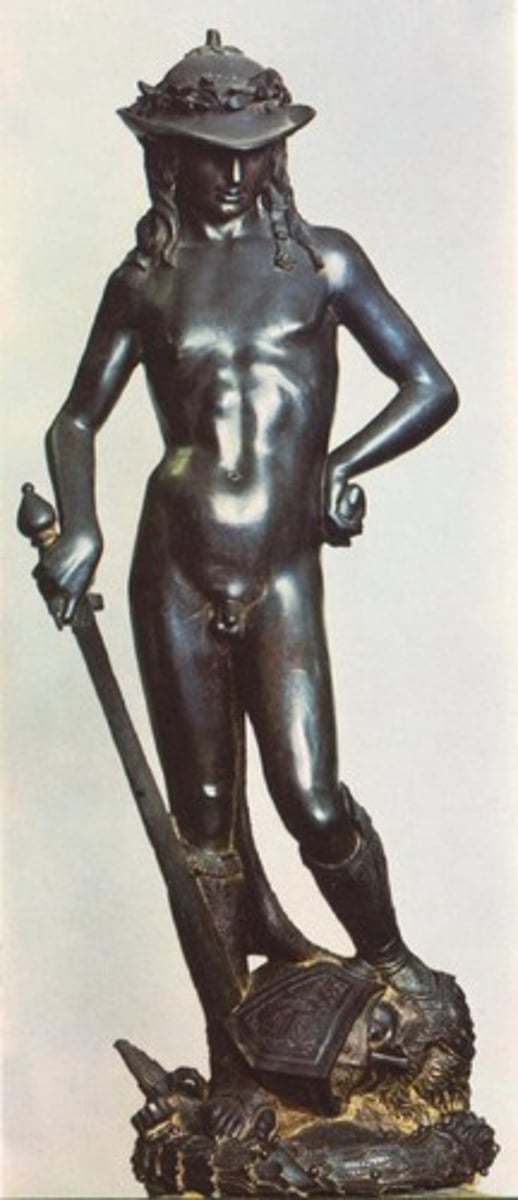Early Renaissance in Italy: Fifteenth Century
1/4
There's no tags or description
Looks like no tags are added yet.
Name | Mastery | Learn | Test | Matching | Spaced |
|---|
No study sessions yet.
5 Terms
- rectangular chapel attached to church of Santa Croce, Florence
- two barrel vaults on interior, small domes over crossing
- interior w/ restrained sense of color, muted tones, punctuated by glazed terracotta tiles
- Chapter House
- attribution to Brunelleschi has be questioned
- revival of classical columns and motifs
- finished after death of Brunelleschi, so other architects made some parts (eg frame)
Pazzi Chapel
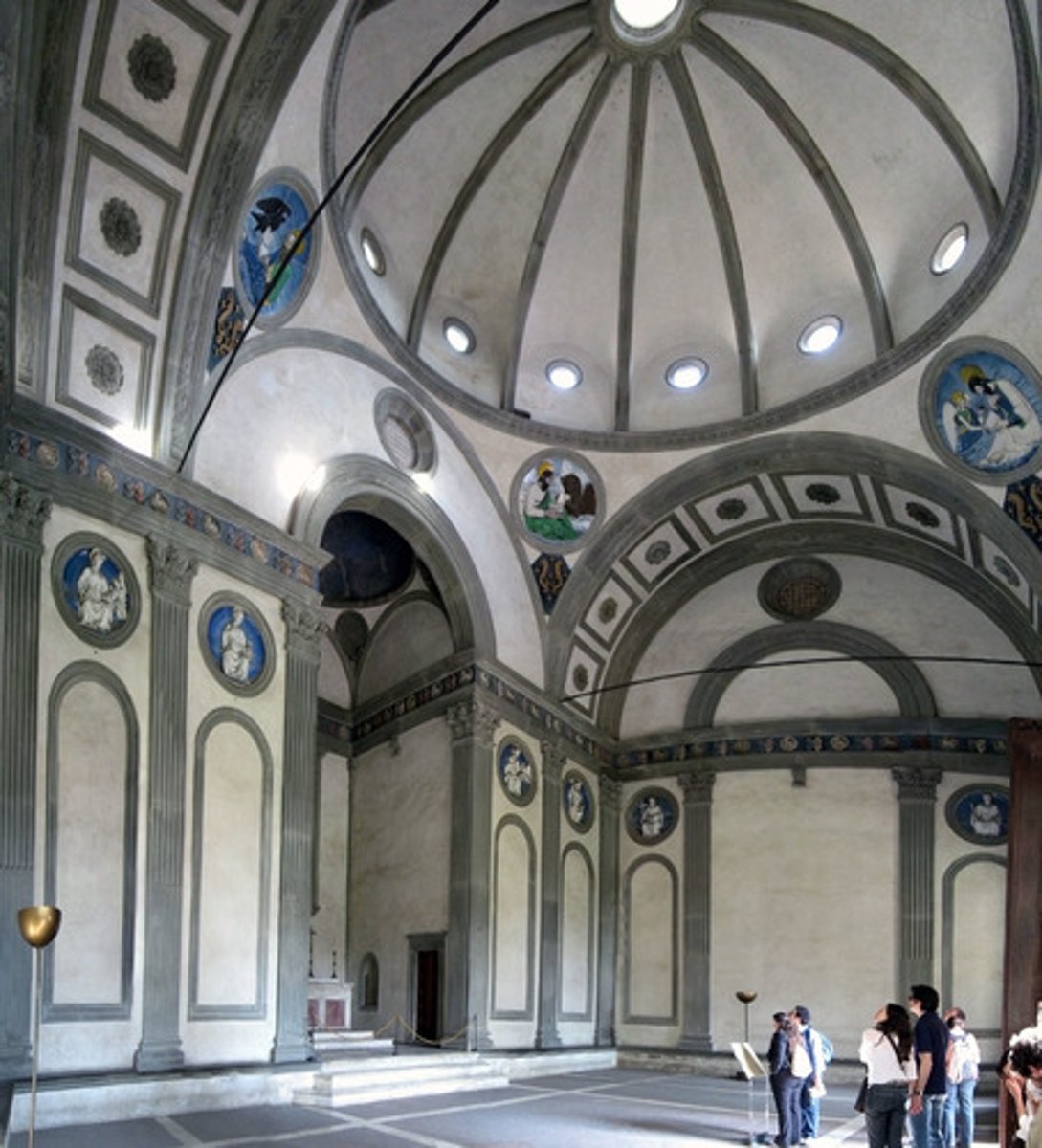
- three horizontal floors of equal height separated by strongly articulated stringcourse
- pilasters rise vertically and divide spaces into squarish shapes
- strong classical cornice caps building
- rejects rustication of earlier Renaissance palaces; instead uses beveled masonry joints
- first floor pilasters Tuscan (derived from Doric); second are Alberti's own invention (derived from Ionic); third Corinthian
- friezes contain Rucellai family symbols: billowing sails
- square windows on first floor; windows w/ mullions on second and third floors
- original building w/ five bays on left, w/ central door; second doorway bay and right bay added later; eighth bay fragmentary: owners of house next door refused to sell
- patron: Giovanni Rucellai, wealthy merchant
Palazzo Rucellai
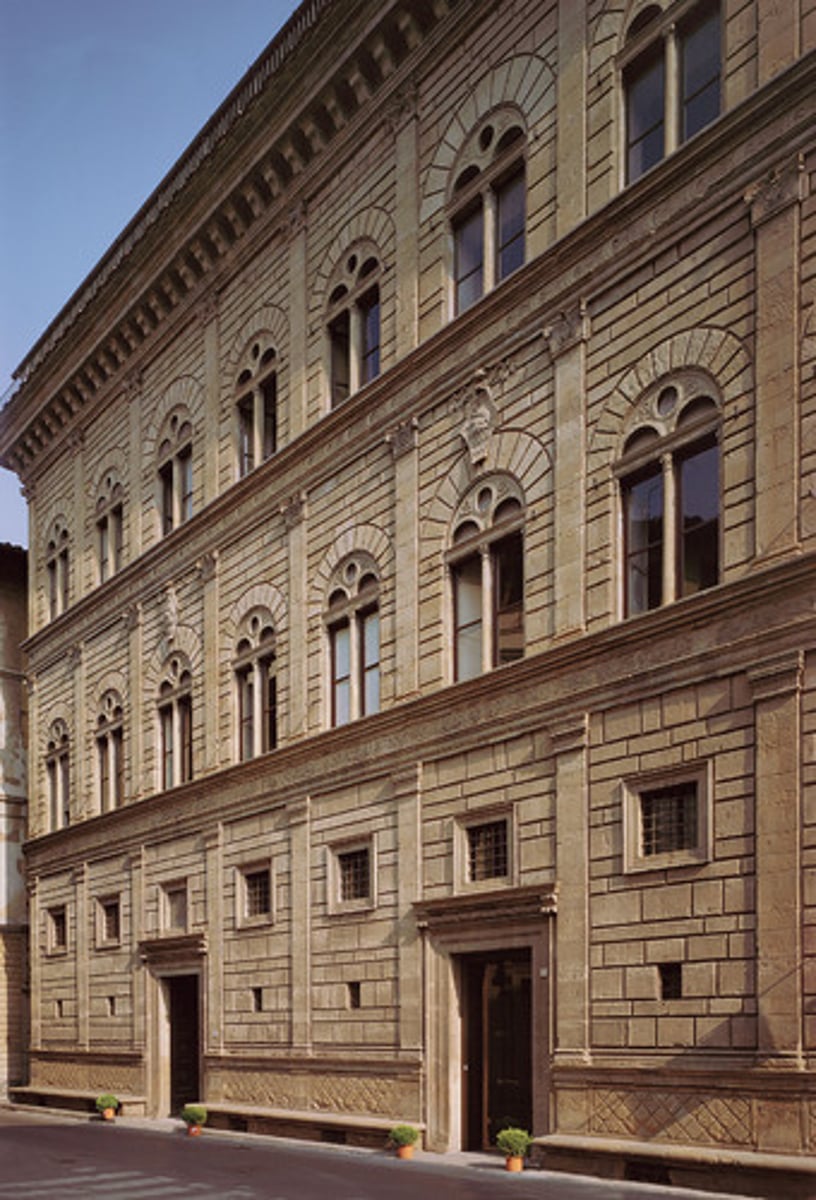
- Mary seen as young mother
- model may have been artist's lover
- landscape inspired by Flemish painting; symbolic: rock formations indicate the Church; city near Madonna's head is Heavenly Jerusalem
- motif of a pearl seen in headdress and pillow as products of the sea (in upper left corner); used in scenes of the Immaculate Conception of Mary and the Incarnation of Christ
- depicted as if in a window in a Florentine home
- humanization of a sacred theme
- detailed drapery and halos
Madonna and Child with Two Angels
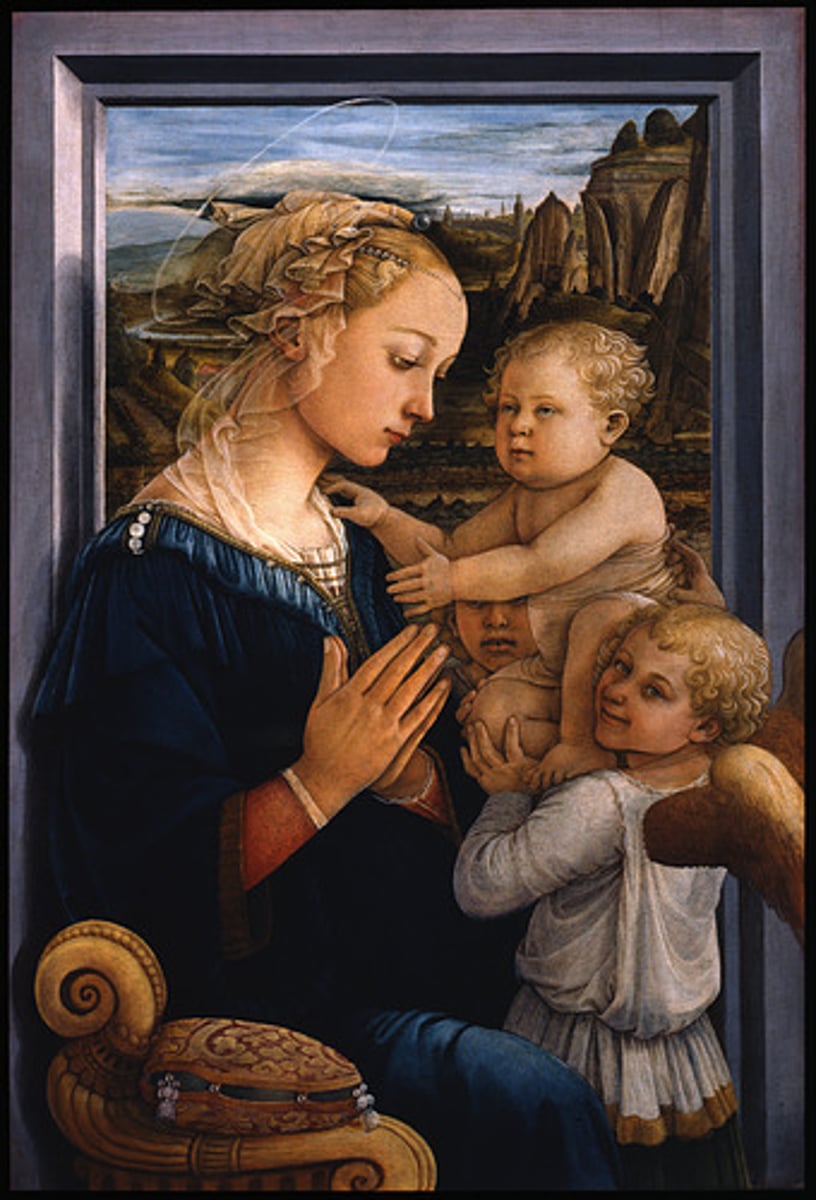
- Venus emerges fully grown from foam of the sea; faraway look in eyes
- roses scattered before her; created at the same time as Venus: love can be painful
- left: zephyr (west wind) and chloris (nymph)
- right: handmaiden ruses to clothe her
- figures float, not anchored to ground
- crisply drawn figures; pale colors
- landscape flat and unrealistic, simple V-shaped waves
- a Medici commission
Birth of Venus
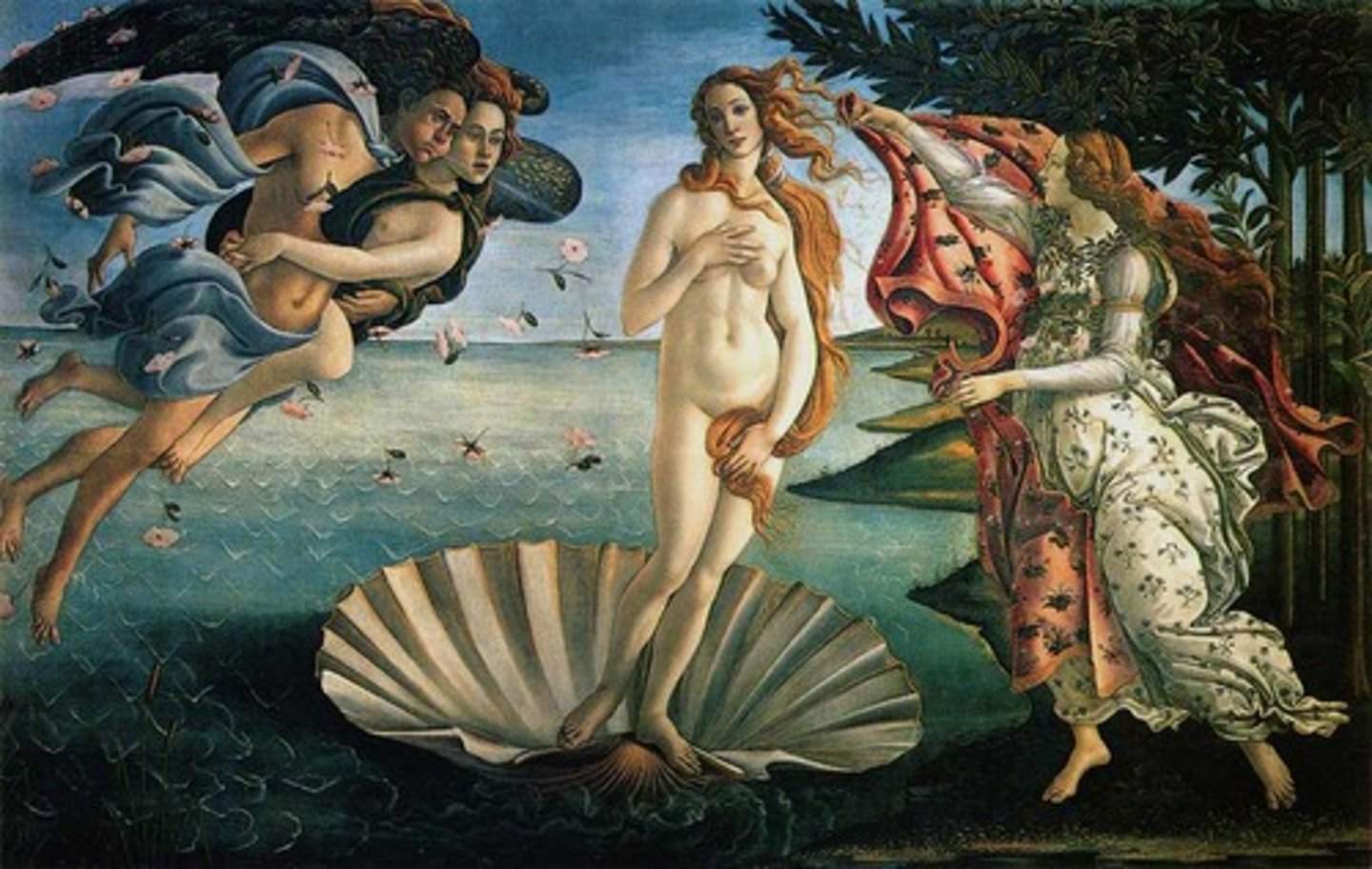
- first large bronze nude since antiquity
- exaggerated contrapposto of body
- life-size work probably meant to be housed in Medici Palace, not for public viewing
- androgynous figure
- stance: nonchalance, contemplating victory over Goliath; Goliath's head at David's feet; David's head lower to suggest humility
- Laurel on hat: David was a poet; refers him as author of a book in Bible
- nudity = refusal to wear armor?
David
